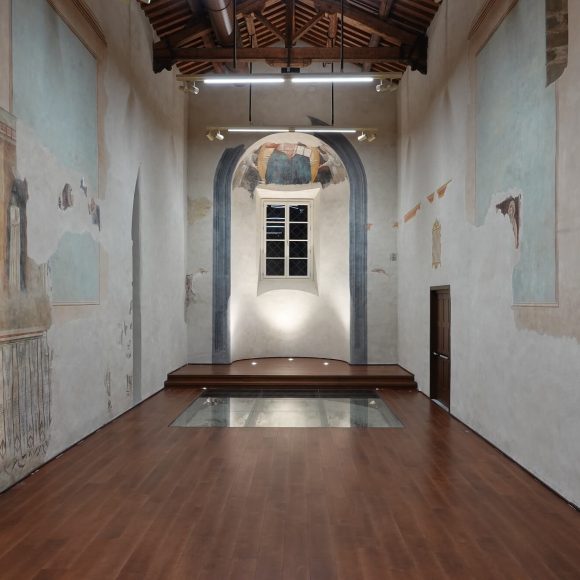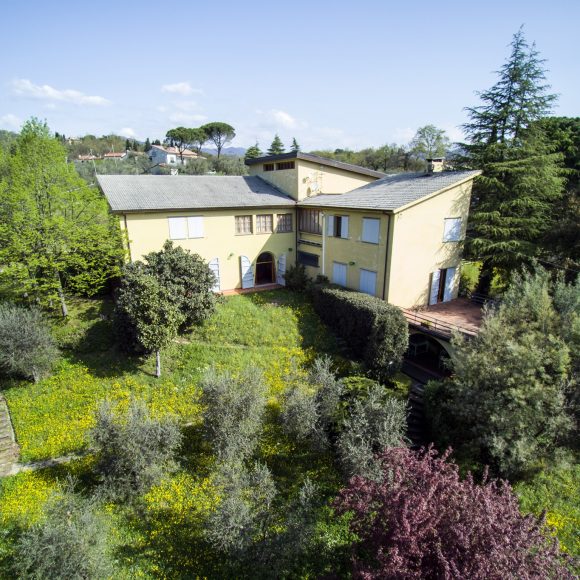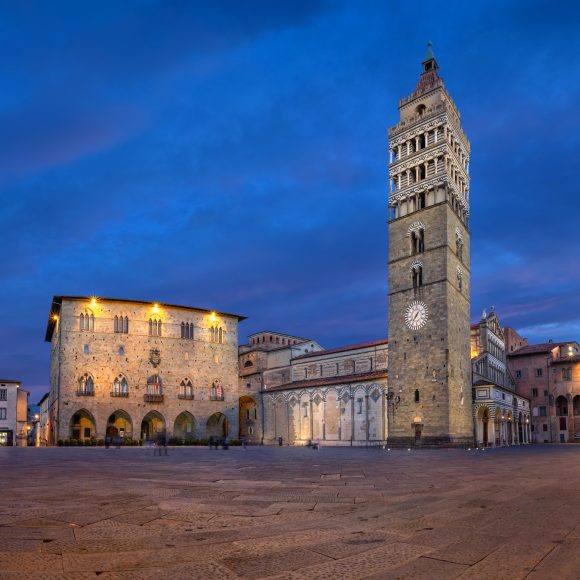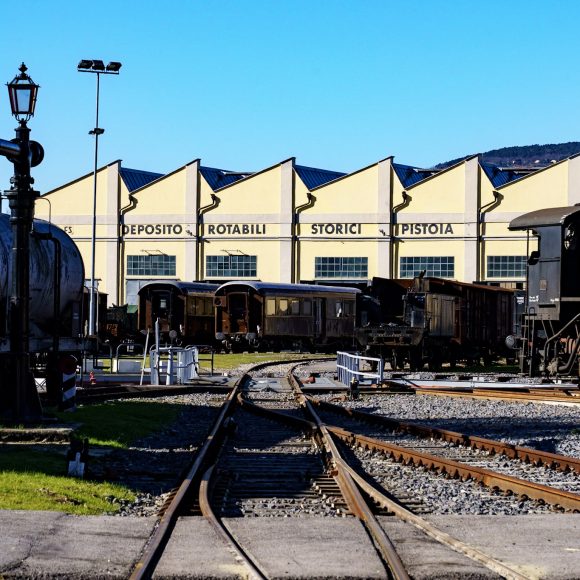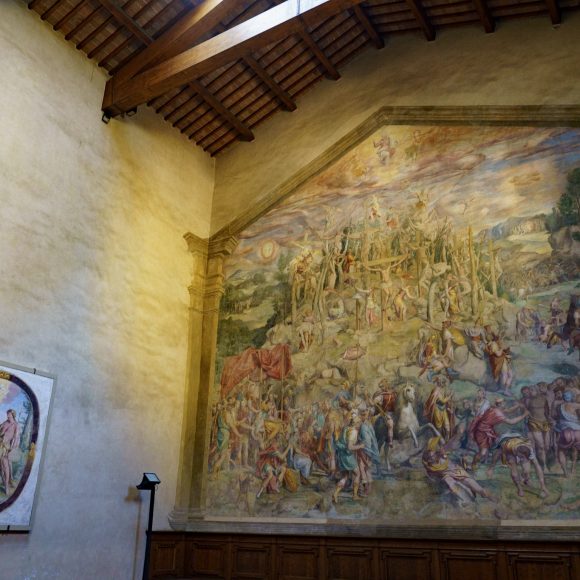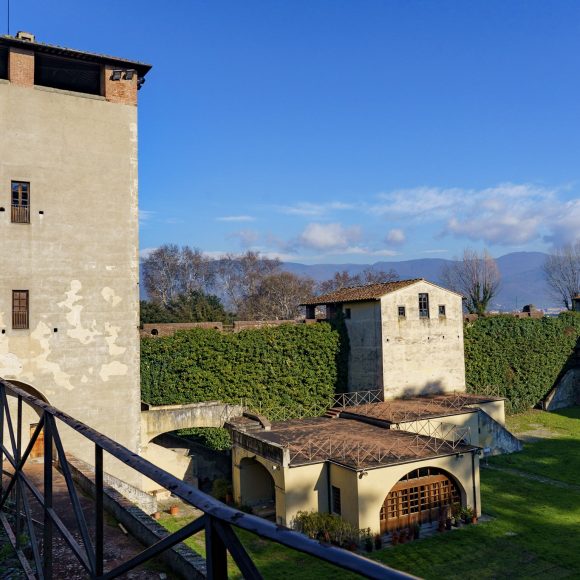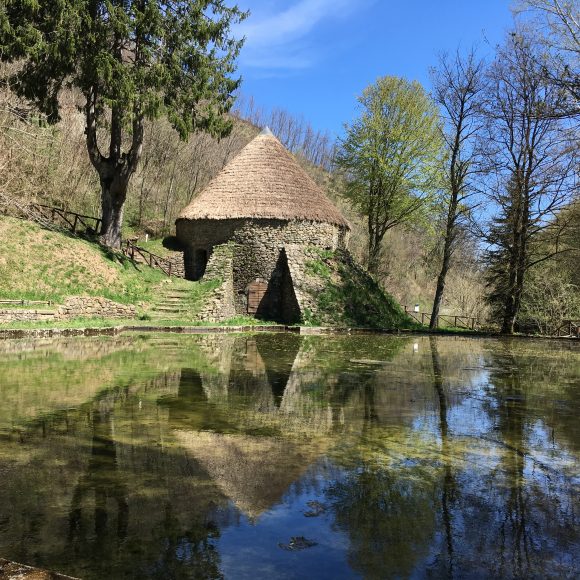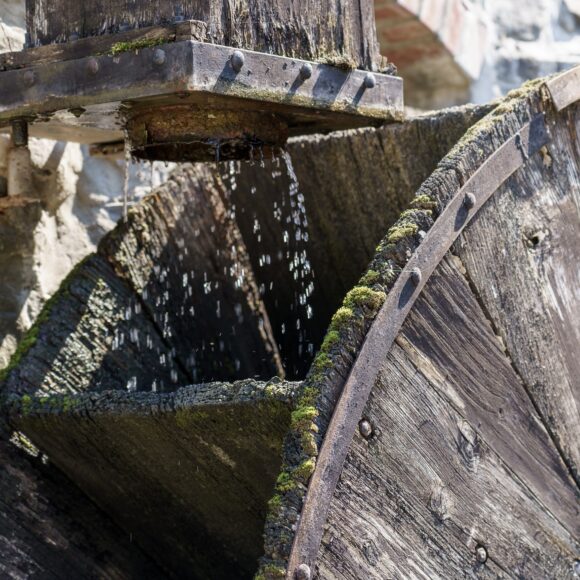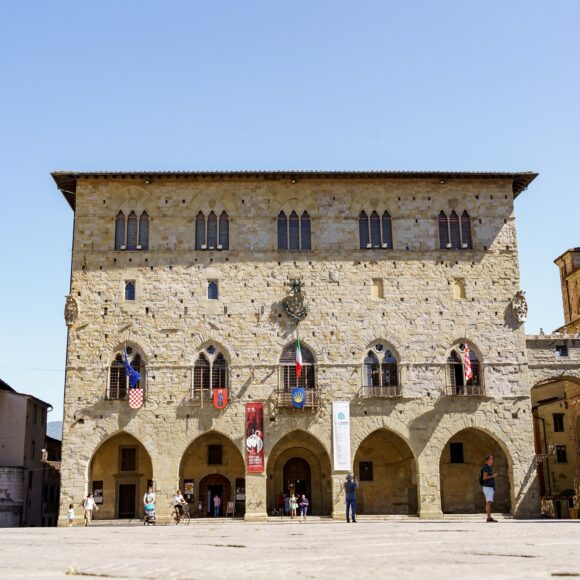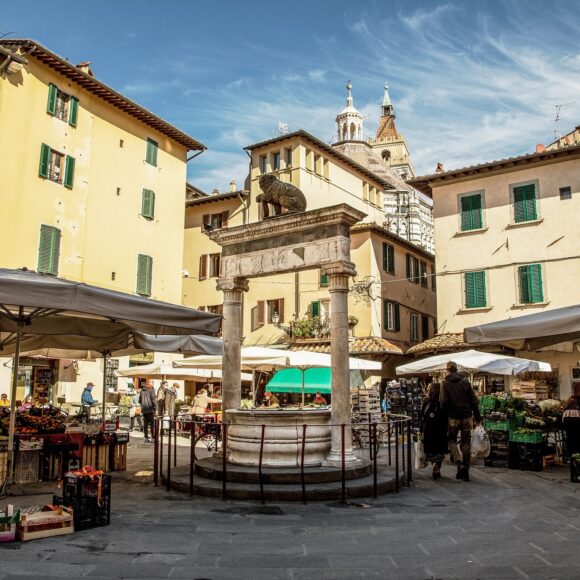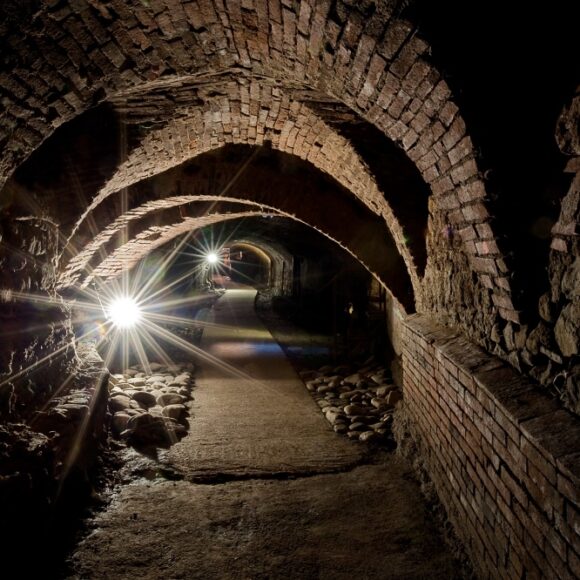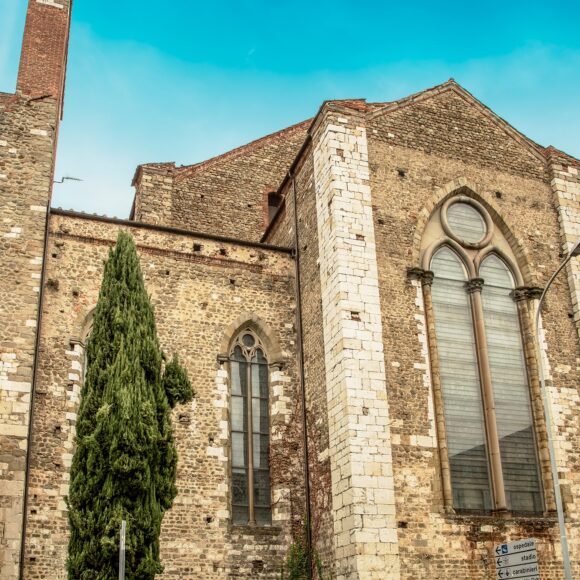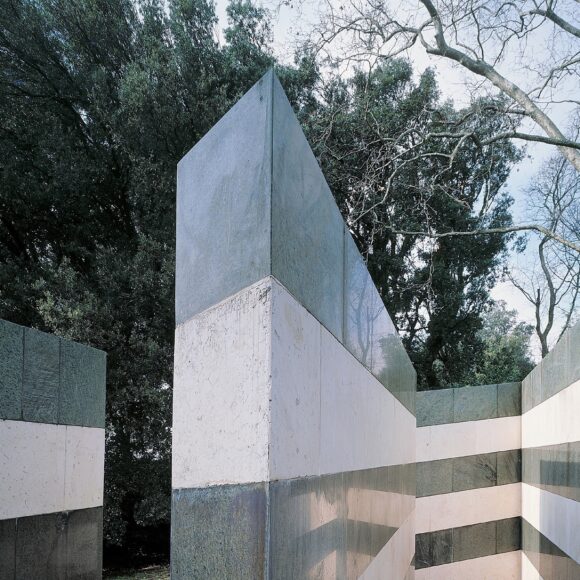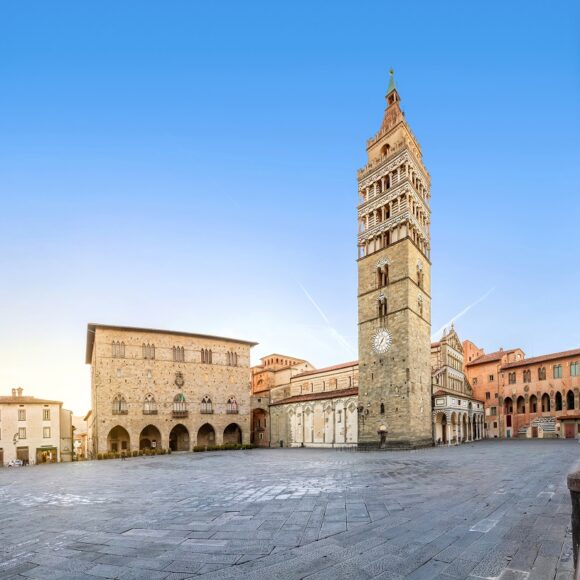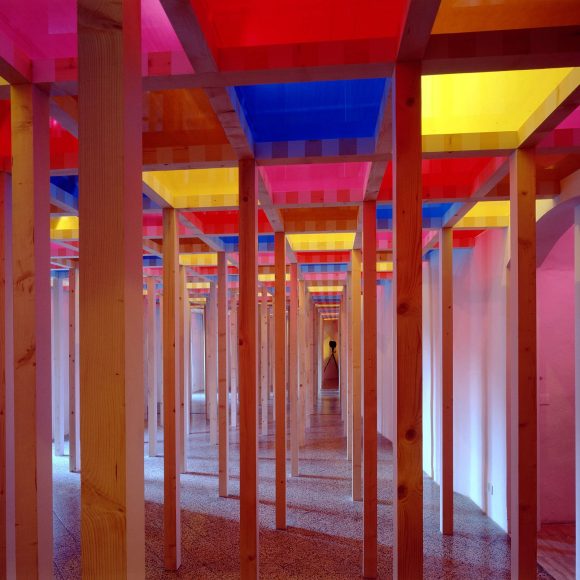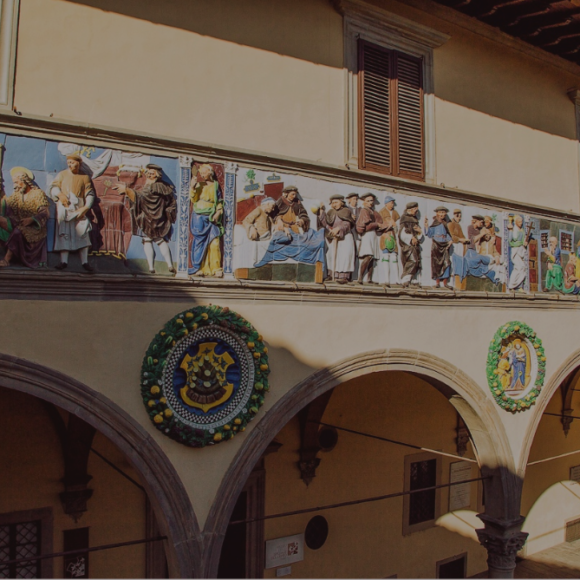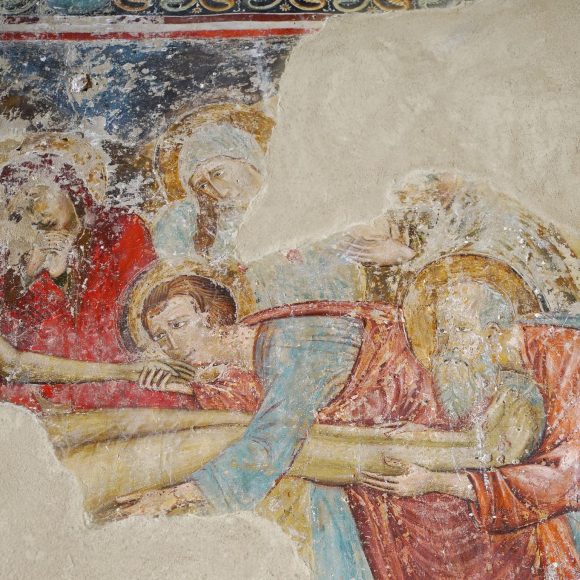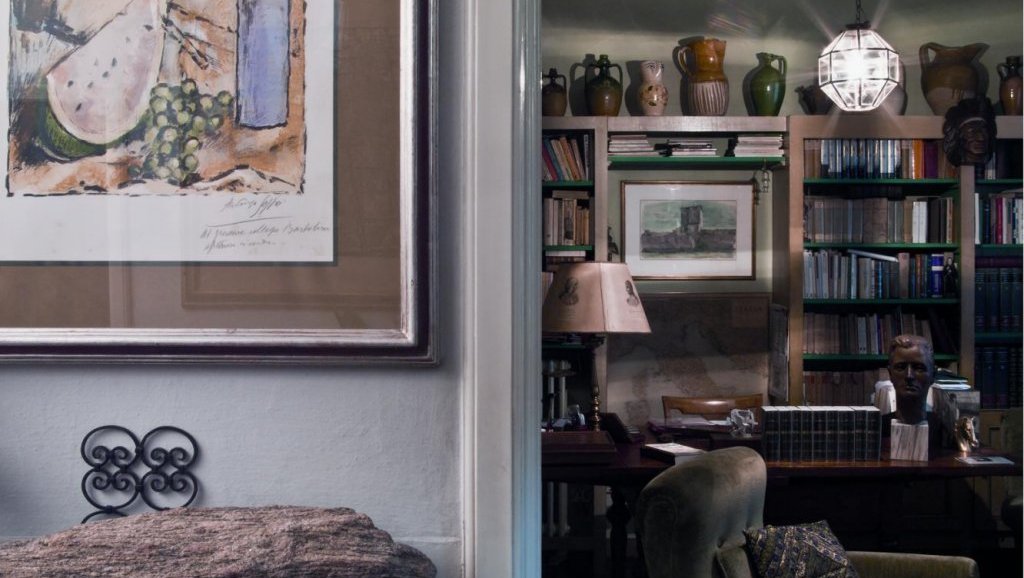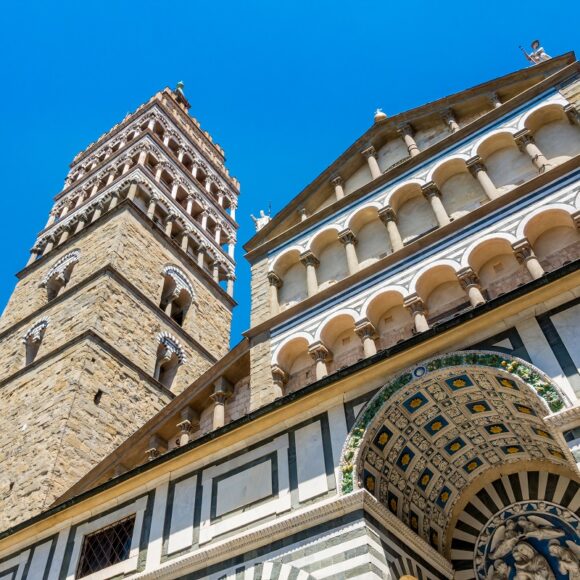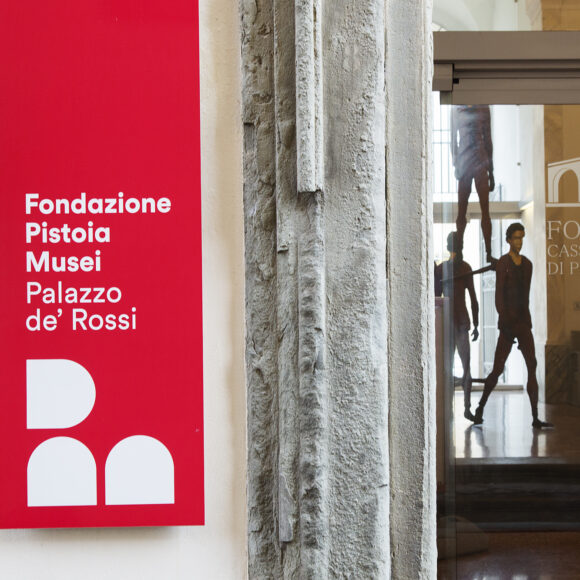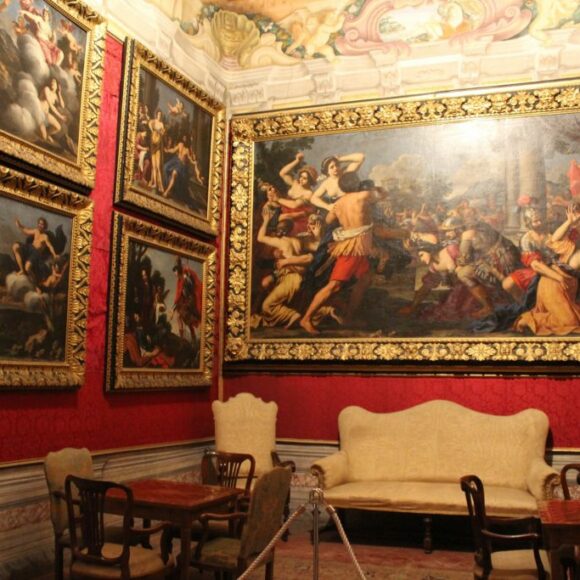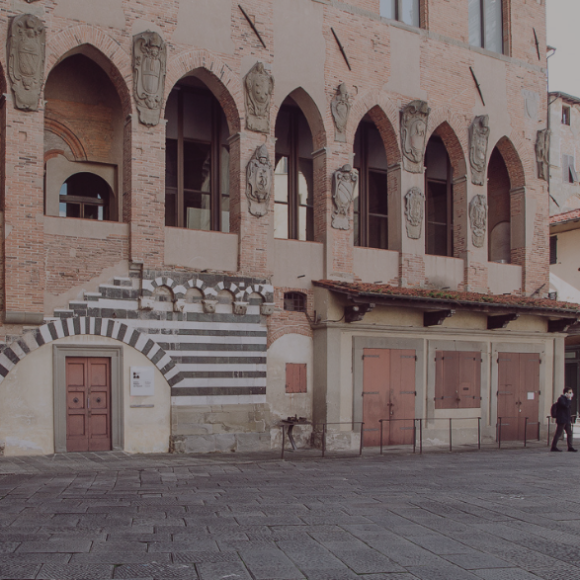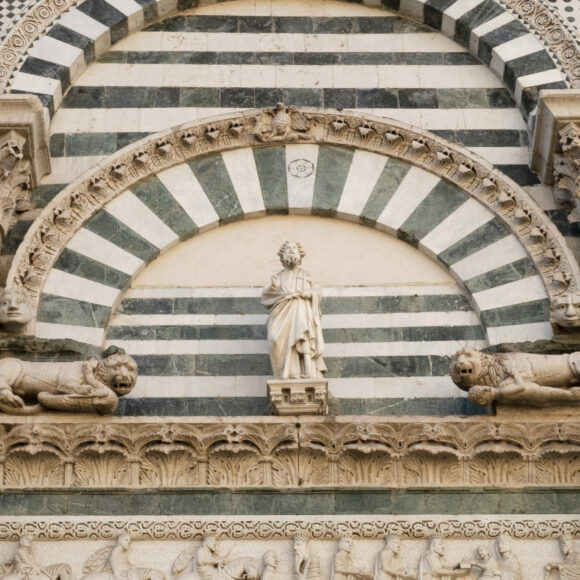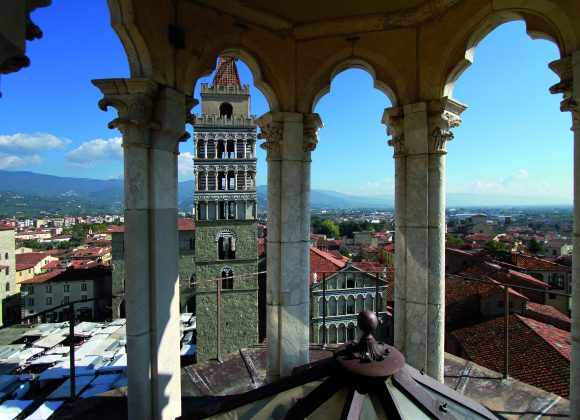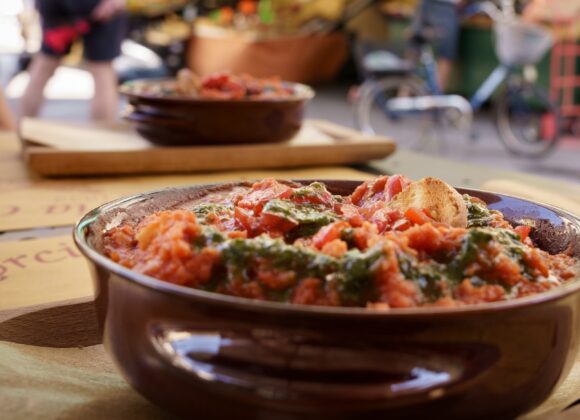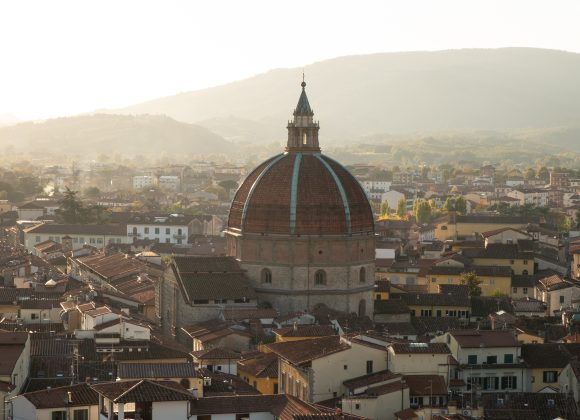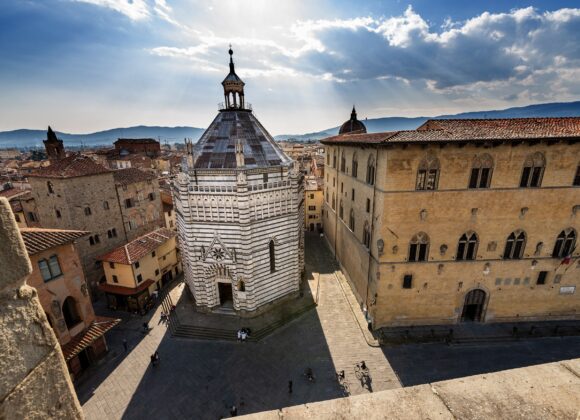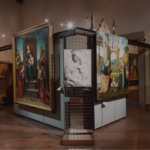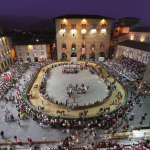Not only the Joust of the Bear: a July full of traditions
From the Clothing of the Saint to St. James Way
Pistoia
On 25th July, Pistoia celebrates its Patron Saint with traditions, processions in historical costumes and the iconic Giostra dell'Orso – the Joust of the Bear.
On 25th July, the Day of Saint James, alias Saint Jacob (San Jacopo or Giacomo in Italian), Pistoia celebrates its patron saint by dressing up in historical costumes, as the Pistoia people have traditionally been doing for centuries. For one day, the city turns the clock back to the Middle Ages, to the era of noble dames and medieval knights who parade in a procession and who compete against each other in the famous Joust of the Bear – ‘Giostra dell’Orso’.
Discover everything about the traditions which are linked to St. James in Pistoia, by immersing yourself in art, in traditions and in typical local food.
1. The Clothing of Saint James
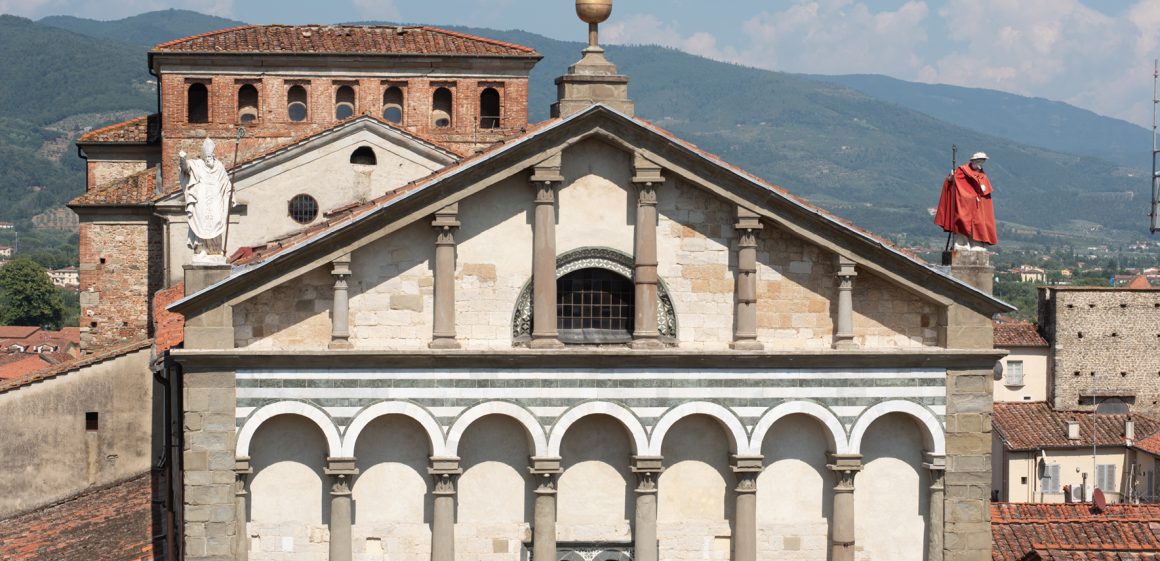
Have you ever seen a fully dressed statue? On 16th July, the statue of St. James, which stands on top of the Cathedral of Saint Zeno, is dressed up in a scarlet cloak. This clothing follows a historical tradition which recounts how the Saint – before he dedicated himself to his vocation – had the habit of putting off paying his bills till summertime. So, when July came round, a creditor would come to ask him to pay his bill but, shrewdly, Saint James arrived at the meeting all wrapped up in a cloak, maintaining that it was still too cold to have to pay his debts.
Even today, this story lingers on as there is the habit for Pistoia inhabitants to say, if someone dresses too heavily for the warm season that “you are behaving like Saint James”.
2. The Silver Altar in the Cathedral

On the Patron Saint’s Day, the celebrations begin with – as they have always done – Mass in the Cathedral of Saint Zeno. Much importance is given to the Silver Altar – a masterpiece of Florentine goldsmiths – and to the wonderful Reliquary of Saint James made by Lorenzo Ghiberti. This reliquary holds the relic of Saint James the Elder, or the Great, and was brought from Santiago de Compostela to Pistoia in the 12th century.
3. he Joust of the Bear – ‘La Giostra dell’Orso’
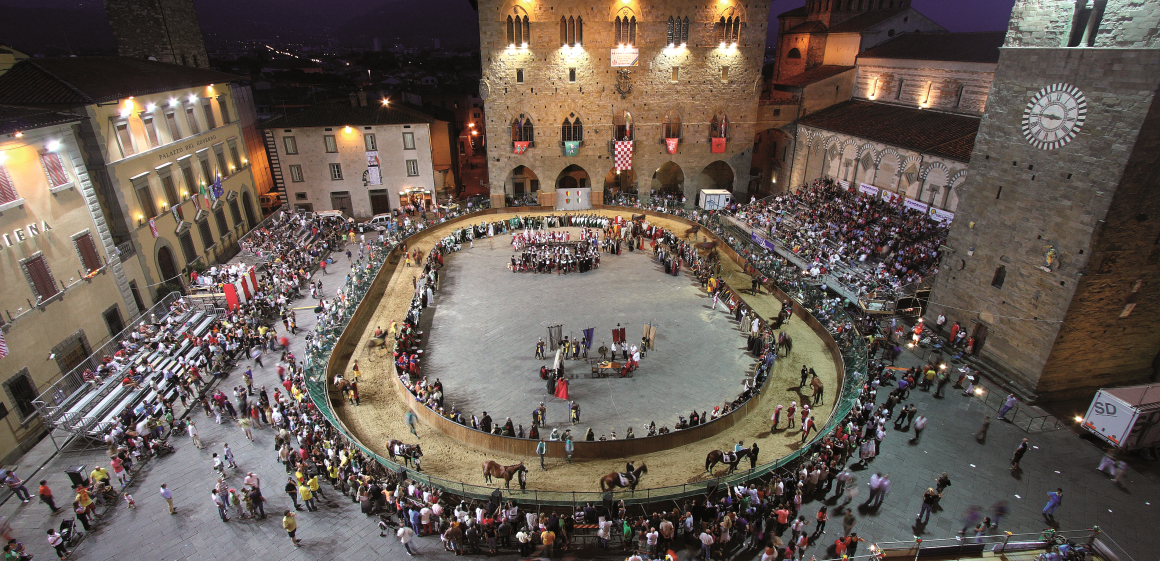
Centuries ago, it was called the Palio dei Berberi, and the game is mentioned for the first time in 1265. Then over the centuries, it was sometimes not played at all, or it underwent changes and modifications, up until 1947 when it was brought back to life for good with the name of the Giostra dell’Orso – Joust of the Bear. The bear is in fact, Pistoia’s heraldic animal, also called Micco, and is shown holding a red and white squared shield.

The Joust of the Bear is played on the evening of 25th July in the Cathedral Square, with four knights who challenge each other to a horse race and who represent the town’s four districts, or in Italian ‘rione’. Each district corresponds to one of the town’s antique gates: the Golden Lion Rione of Porta San Marco with its gold and red colours; the White Deer Rione of the Porta Lucchese, defined in white and green; the Dragon Rione of Porta Carratica with its red and green coat of arms, and the Griffon Rione of the Porta al Borgo, with its white and red crest.
The winner is the district who wins most points, which are gained by hitting a target that has the shape of the Micco i.e., the Bear. The prize is the ‘Palio’, a cloth banner that every year is designed by a different artist.
The game’s rules were altered in 2016 to guarantee more safety for the horses who take part in the contest.
Clicca here for the Joust of the bear 2024.
4. The Historical Procession

Dames, infantrymen and noblemen of Pistoia’s historical family parade in a historical costume procession which moves through most of the town’s centre. Its itinerary follows Pistoia’s ancient, walled boundary, passing by the most important and administrative spots of the city: the Cathedral of Saint Zeno, the Baptistery of San Giovanni in Corte, the Palazzo del Tribunale – the Courthouse – the Palazzo del Comune – the Town Hall – and many others. Music and flag-throwers keep merrily in step with the parade.
5. Eating with Saint James
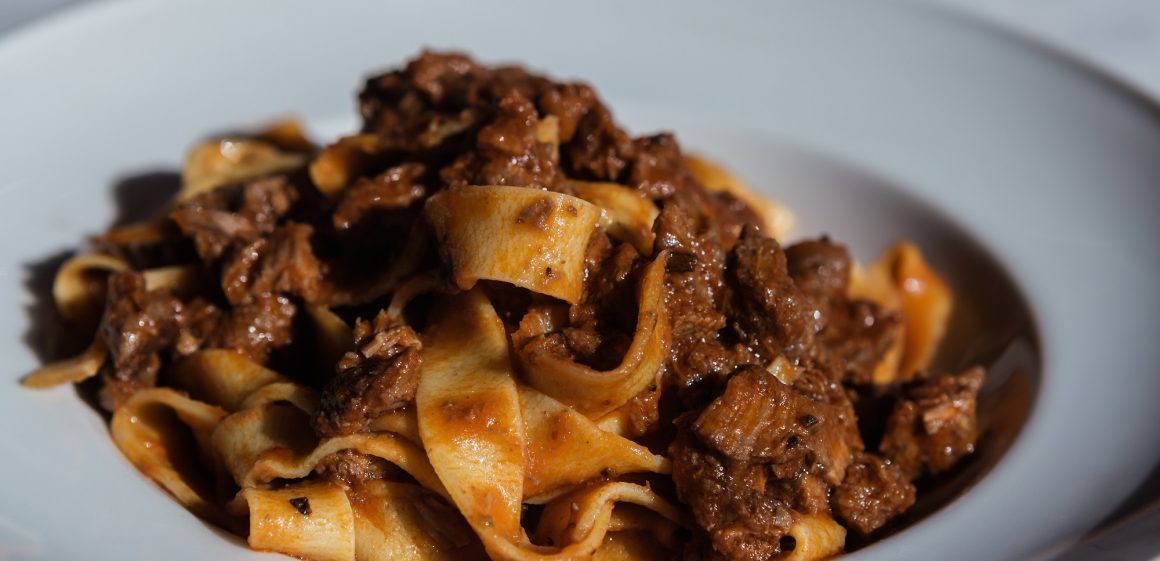
On July 25th, celebrations involve eating, too, especially with macaroni and duck sauce. The most important part of this dish is the muscovy duck sauce, served on fresh, handmade macaroni, as tradition demands. This, however, is only one of Pistoia’s many traditional and typical dishes.
Click here to find out more about them.
6. Saint James’ Way
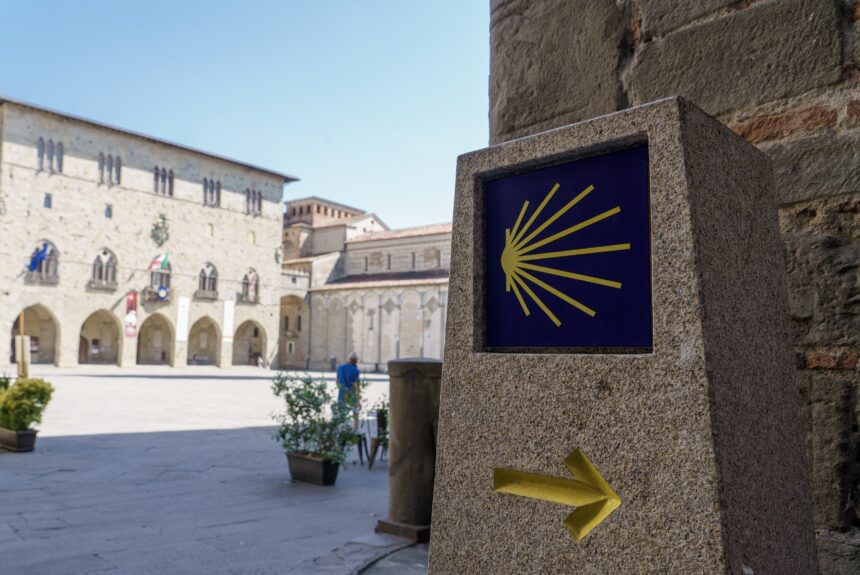
The half shell – an iconographical symbol of Saint James – is also the symbol of the pilgrim. In the Middle Ages, pilgrims on their way from Rome or Santiago de Compostela, stopped over in Pistoia to pay homage to James the Apostle’s reliquary, walking along the paths of the present-day St. James Way – Cammino di San Jacopo, which nowadays connects Florence to Livorno.
To find out more
idee-incluso
idee-non-incluso
idee-informazioni
idee-prenota
experience the territory

